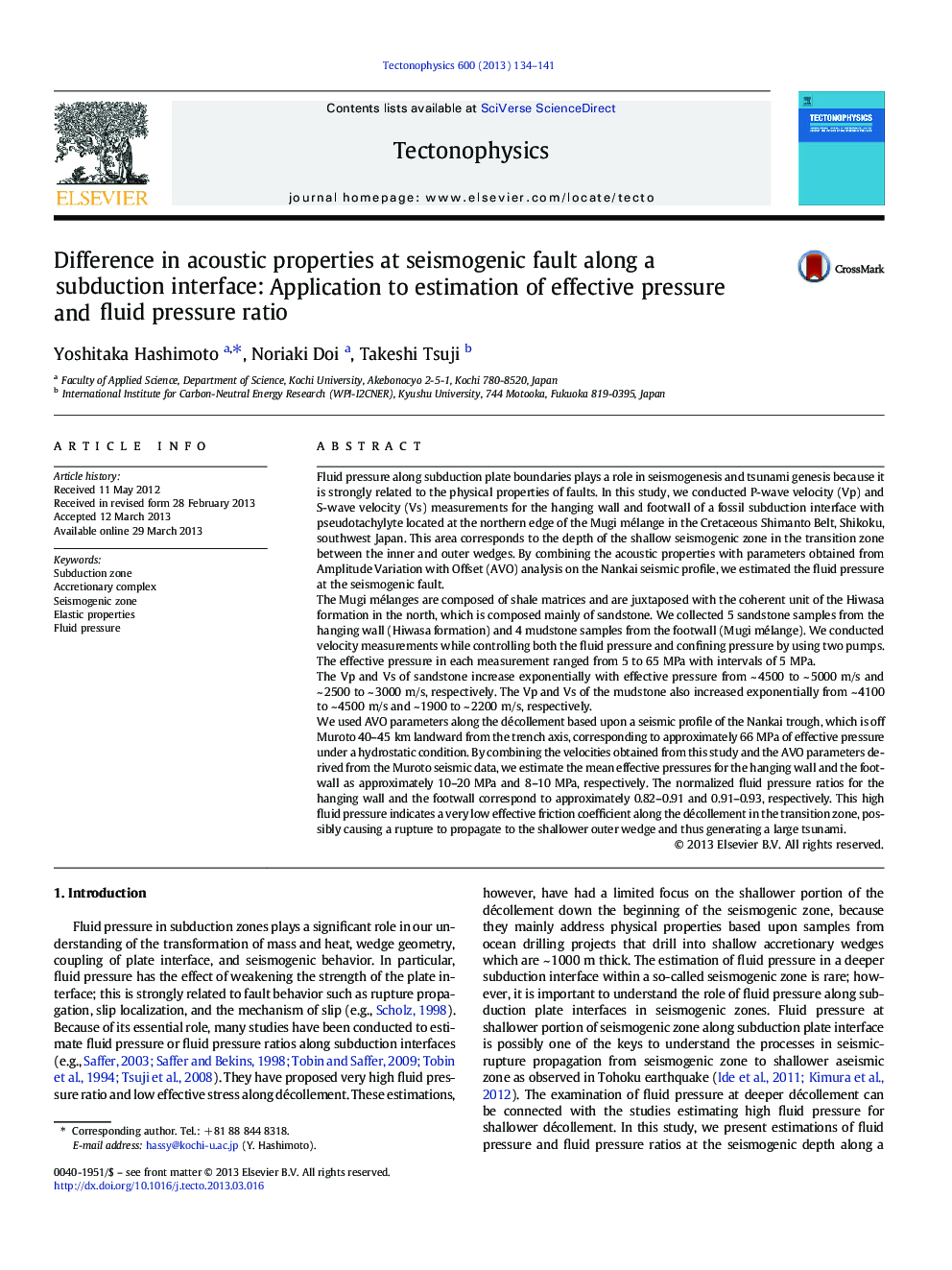| کد مقاله | کد نشریه | سال انتشار | مقاله انگلیسی | نسخه تمام متن |
|---|---|---|---|---|
| 4692224 | 1636787 | 2013 | 8 صفحه PDF | دانلود رایگان |
• Vp and Vs were measured from hanging-wall and footwall at a fossil seismogenic décollement.
• Very high fluid pressure ratio was estimated using seismic data and obtained properties.
• The target depth was at transition zone, deeper than that of previous works.
Fluid pressure along subduction plate boundaries plays a role in seismogenesis and tsunami genesis because it is strongly related to the physical properties of faults. In this study, we conducted P-wave velocity (Vp) and S-wave velocity (Vs) measurements for the hanging wall and footwall of a fossil subduction interface with pseudotachylyte located at the northern edge of the Mugi mélange in the Cretaceous Shimanto Belt, Shikoku, southwest Japan. This area corresponds to the depth of the shallow seismogenic zone in the transition zone between the inner and outer wedges. By combining the acoustic properties with parameters obtained from Amplitude Variation with Offset (AVO) analysis on the Nankai seismic profile, we estimated the fluid pressure at the seismogenic fault.The Mugi mélanges are composed of shale matrices and are juxtaposed with the coherent unit of the Hiwasa formation in the north, which is composed mainly of sandstone. We collected 5 sandstone samples from the hanging wall (Hiwasa formation) and 4 mudstone samples from the footwall (Mugi mélange). We conducted velocity measurements while controlling both the fluid pressure and confining pressure by using two pumps. The effective pressure in each measurement ranged from 5 to 65 MPa with intervals of 5 MPa.The Vp and Vs of sandstone increase exponentially with effective pressure from ~ 4500 to ~ 5000 m/s and ~ 2500 to ~ 3000 m/s, respectively. The Vp and Vs of the mudstone also increased exponentially from ~ 4100 to ~ 4500 m/s and ~ 1900 to ~ 2200 m/s, respectively.We used AVO parameters along the décollement based upon a seismic profile of the Nankai trough, which is off Muroto 40–45 km landward from the trench axis, corresponding to approximately 66 MPa of effective pressure under a hydrostatic condition. By combining the velocities obtained from this study and the AVO parameters derived from the Muroto seismic data, we estimate the mean effective pressures for the hanging wall and the footwall as approximately 10–20 MPa and 8–10 MPa, respectively. The normalized fluid pressure ratios for the hanging wall and the footwall correspond to approximately 0.82–0.91 and 0.91–0.93, respectively. This high fluid pressure indicates a very low effective friction coefficient along the décollement in the transition zone, possibly causing a rupture to propagate to the shallower outer wedge and thus generating a large tsunami.
Journal: Tectonophysics - Volume 600, 17 July 2013, Pages 134–141
